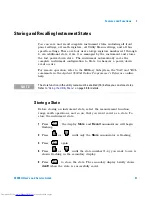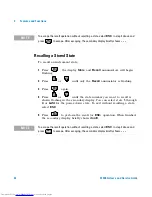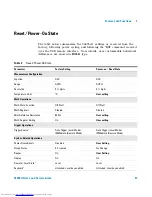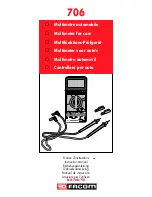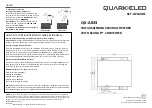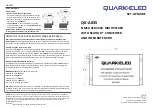
34405A User’s and Service Guide
51
Measurement Tutorial
3
Resistance Measurement Considerations
When measuring resistance, the test current flows from the input HI
terminal through the resistor being measured. The voltage drop across the
resistor being measured is sensed internal to the multimeter. Therefore,
test lead resistance is also measured.
The errors mentioned earlier in this chapter for DC voltage measurements
also apply to resistance measurements. Additional error sources unique to
resistance measurements are discussed here.
Removing Test Lead Resistance Errors
To eliminate offset errors associated with the test lead resistance in
2–wire ohms measurements, follow the steps below.
1
Connect the ends of the test leads together. The multimeter displays the
test lead resistance.
2
Press
. The multimeter stores the test lead resistance as the
2–wire ohms null value, and subtracts that value from subsequent
measurements.
Minimizing Power Dissipation Effects
When measuring resistors designed for temperature measurements (or
other resistive devices with large temperature coefficients), be aware that
the multimeter will dissipate some power in the device under test.
If power dissipation is a problem, you should select the multimeter's next
higher measurement range to reduce the errors to acceptable levels. The
following table shows several examples.
Range
Test Current
DUT
Power at Full Scale
100
Ω
1 mA
100
m
W
1 k
Ω
0.83 mA
689
m
W
10 k
Ω
100
m
A
100
m
W
100 k
Ω
10
m
A
10
m
W
1 M
Ω
900nA
810
nW
Null
Null
Downloaded from
www.Manualslib.com
manuals search engine





